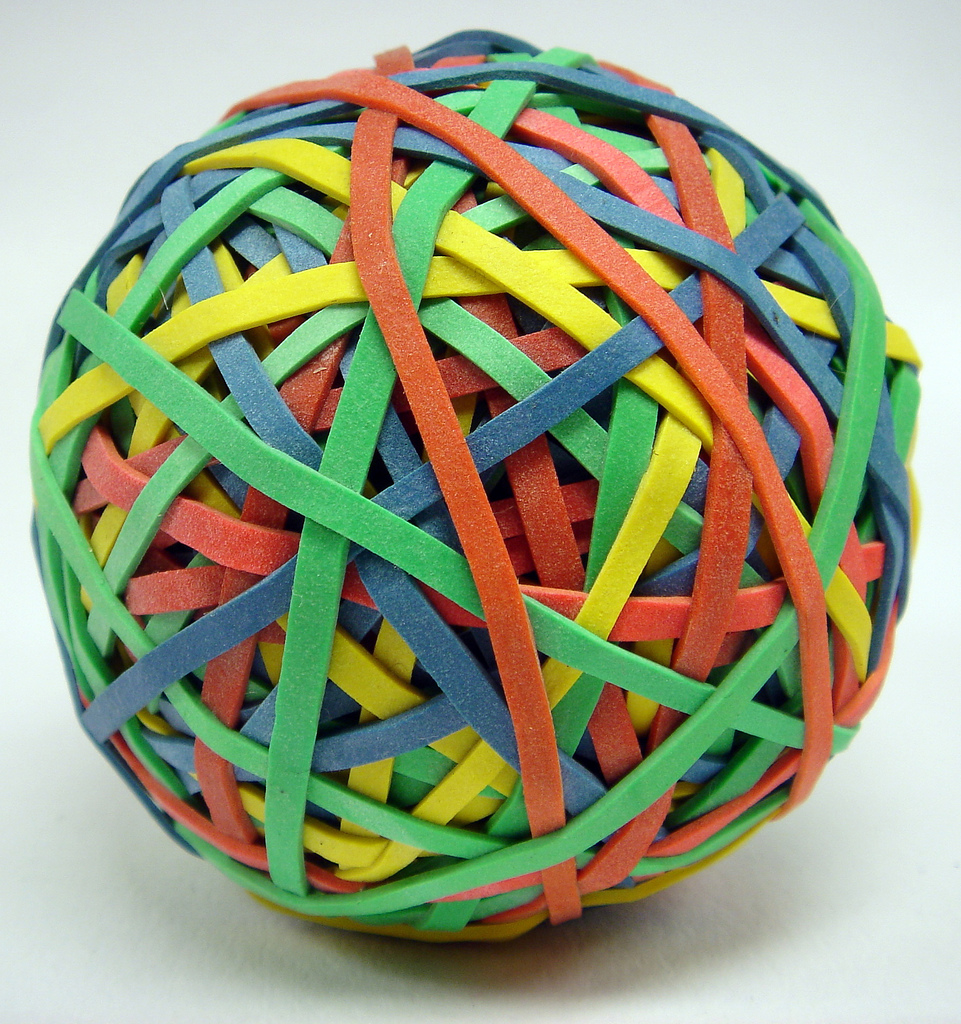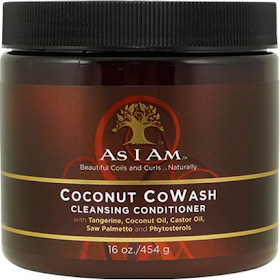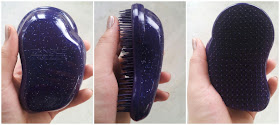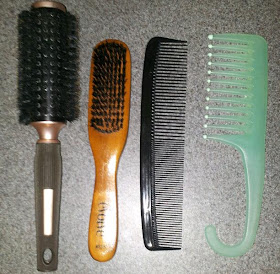Researching what it means to have naturally curly hair led me to hear a lot about sulfates being a big NO in the community. I looked at my textbook from cosmetology school to find out more about what makes sulfates so scary.
- What Are Sulfates & Surfactants?
Sulfates and surfactants are added to shampoo in order to break the waters surface tension so it will become MORE of a liquid and spread easier onto your hair. The shampoo then penetrates through the product buildup and dirt on your scalp easier achieving a deeper clean. Detergents and are what makes your shampoo lather but the lather doesn't really help your hair any. When you get this lather into your eyes it stings from this chemical. Baby shampoo is usually labeled "no tear" or "tear free" formulated. They can say this because baby shampoo does not contain sulfates so nothing in the shampoo burns when it comes in contact with the eyes. It still doesn't mean shampoo is good to get in a baby's eyes!
- But Why?
Sulfates such as Sodium Lauryl Sulfate are very commonly used in 90% of commercial shampoo's and in high concentrations are used to de-grease car engines! It strips your body and hair of it's natural oils causing your hair and skin to dry out faster than it normally would. They use the chemical to get the best results possible from the product and the whole point of shampoo is to cleanse your hair.
- Do I Need Sulfates?
NO... Technically you do not need your shampoo to lather but YES, you will want the water in your shower to penetrate and clean your hair the best it can. This is also a challenge that comes along with well water or hard water. Media has made us all believe that when a shampoo lathers it means it's working but it would with or without this added chemical. The chemical is just used to enhance the results of the product it's in.
Sulfates are both a good and a bad thing. The pro is that your hair will be very clean but the con is that your hair will become dry over time. The trade off of never using sulfates is that your hair will need washed more often and your hair will never be as squeaky clean as it could be. But to some people this isn't the end of the world.
- Will Sulfates Harm Me?
Sometimes... They can worsen pre-existing medical problems or burn your eyes when they come in contact with the lather of sulfates. With repetitive exposure to sulfates coming in contact with the eyes it can cause severe damage and blindness in infants from breaking down our cells proteins. Some studies have found the chemical can lead to cancer or hair loss as well! Chemicals included in shampoo containing sulfates have been found to effect the liver and lungs as well.
- Who Shouldn't Use Sulfates?
- Age- The older you get the more sensitive your thinning skin can become. The Sulfates can dry aged skin out and take away needed oils.
- Eczema- Sulfates are proven to cause extreme irritation to people with eczema.
- Dandruff- Sulfates will worsen this and cause more flaking from drying out the scalp even more.
- Oily Skin- Even though sulfates remove oil from the skin the issue is when your constantly removing them your body over produces oil to replace what's been lost. It's a vicious circle of having an oily scalp --> using sulfates to get rid of oil --> your body produces more oil to replace what was stripped away so you start the cycle over again increasingly making it worsen.
- Dry Hair- Not only ethnic people get dry brittle hair. Sulfates will just worsen the dryness causing more harm than good. It could even lead to dandruff over time.
- Ethnic Hair- African American hair especially can be brittle and dry by nature. Chemicals like relaxers create overly porous hair as well. The sulfates just worsen the dryness and can cause the brittle hair to be breakage prone.
- Chemically Treated or Color Treated Hair- Sulfates will strip the color out of your hair slowly over time with each wash or dry out and break off chemically lightened damaged hair.
- Irritating Sulfates:
- Sodium Myreth Sulfate
- Tea Laureth Sulfate
- Sodium Laureth Sulfate
- Sodium Lauryl Sulfate... The best cleaner, the cheapest, and the most popularly used.
- Ammonia Laureth Sulfate... The most irritating sulfate!
- What Else Contains Sulfates?
- Toothpaste... except for Sensodyne
- Conditioner
- Shaving Cream
- Body Soap
- Bubble Bath
- Liquid Soap
- Body Gel
- Laundry Detergent
Beware Of Head & Shoulders:
While going to hair school I was warned about all the bad stuff inside of head and shoulders. I decided to try it out for myself and I hated it. I think It made my scalp even dryer and more sensitive. My hair felt like straw after as I struggled to get my fingers through the tangles. Here's a breakdown of some of the ingredients listed on the back. I found that it was filled with multiple sulfates, silicone's, and alcohol!
- Sodium Laureth Sulfate- It's the 3rd most irritating sulfate and is the second ingredient. It can cause skin and eye irritation.
- Sodium lauryl sulfate- 3rd ingredient and the second most irritating sulfate. Has been used in medication as a laxative in enemas. It can irritate the face, eyes, and skin and worsen pre-existing skin issues. When used in toothpaste it can cause the recurrence of canker sores.
- Dimethicone- 4th ingredient and is a commonly used oil based silicone. This silicone is also used in contact lenses, medical devices (breast implants), caulking, lubricating oils, Rain-X, and heat-resistant tiles. This chemical coats your hair creating a barrier that moisture and hair products cant get past.
- Cocamide MEA- Also a surfactant or detergent and foaming agent made of fatty acids
- Zinc Carbonate- A feed additive or medication added that can have harmful effects when inhaled. It can cause coughing or wheezing. It can also irritate the eyes and skin as well as cause liver issues in high exposure incidents.
- Sodium Xylenesulfonate (Sodium Xylene Sulfonate)- A sulfate that is used as a thickening agent. It can also irritate the eyes, skin, lungs, and liver. It's the 8th ingredient.
- Cetyl Alcohol- A softening oily alcohol that is used in shampoo as a lubricant and thickening agent. This ingredient gives the product moisture helping your hair to feel soft and smooth. But it still works as an oily type of sulfate breaking waters surface tension. It's used to lubricate industrial machine parts like nuts and bolts also. If overused it can make the hair feel oily.
- Magnesium Sulfate- A drying agent also known as Epsom Salt. This can also be used as a laxative.
- Sodium Chloride- Also known as table salt.
- Sodium Benzoate- A salt used to preserve the ingredients in the shampoo.
- Benzyl Alcohol- An aromatic preserving alcohol. It's commonly used in head lice shampoo. It irritates the eyes, skin, and lungs.
- Are Their Any Sulfate Free Shampoo's?
You can get sulfate free shampoo and conditioners at Sally Beauty Supply stores, Wal-mart, CVS, Wal-greens, Target, and Publix.
~There will be a ton of links below for all of the products.
Just Click the product name and it will take you to the website.~
Popular Brands:
- Redken-
- L'Oreal-
- EverStrong Sulfate Free Fortify System Reconstruct Shampoo Rosemary & Juniper
- EverStrong Sulfate Free Fortify System Hydrate Shampoo Rosemary & Juniper
- EverStrong Sulfate Free Fortify System Bodify Shampoo
- EverPure Sulfate Free Color Care System Moisture Shampoo
- EverPure Sulfate Free Color Care System Smooth Shampoo: For Frizzy Hair
- EverPure Sulfate Free Color Care System Volume Shampoo
- EverSleek Sulfate Free Smoothing System Intense Smooth Shampoo
- EverSleek Sulfate Free Smoothing System Reparative Smooth Shampoo
- EverCreme Sulfate Free Moisture System Nourishing Shampoo
- EverCreme Sulfate Free Moisture System Intense Nourishing Shampoo
- Its A 10- Sulfate Free Miracle Moisture Shampoo
- Tigi Catwalk- Bed Head, Catwalk, S Factor, B For Men
- Curlesque Defining Shampoo
- Catwalk Your Highness Elevating Shampoo
- Super Star Sulfate Free Shampoo For Thick Massive Hair
- Fat Hair Sulphate Free Thickening Shampoo
- Infusium 23- Color Defender Shampoo
- Ion-
- Coloresse- Great for color treated hair
- Pureology- Color treated hair
- AG Hair Cosmetics-
- Wen- A cleansing shampoo that is not for those with oily skin naturally.
- Hair One Hair Cleanser And Conditioner- Knock off cheaper version of Wen and available at Sally Beauty Supply.
- Organic Root Stimulator- Olive Oil Creamy Aloe Shampoo
- Tresemme Naturals- All Products
- Miss Jessie's Creme De La Curl... They have free samples all the time.
- Shea Moisture: Website is down
- Organic African Black Soap Deep Cleansing Shampoo for Dry, Itchy Scalp
- Organic Coconut & Hibiscus Curl & Shine Shampoo For Thick, Curly Hair
- Organic Raw Shea Butter Moisture Retention Shampoo For Dry, Damaged Hair
- Organic Yucca & Baobob Thickening Shampoo For Fine, Thin Hair
- Aveeno Active Naturals:
- Burt's Bee's:
- Macadamia Natural Oil Rejuvenating Shampoo
- Organix- All Products
- Curls-
- Nuance Salma Hayek:
- Desert Essence Organics Hair Care:
- DermOrganic Daily Conditioning Shampoo With Argan Oil... they sell sample boxes
- Chi Ionic Color Protector System Sulfate Free Shampoo
- Giovanni-
- Curly Hair Solutions Silk Shampoo
- Mixed Chicks- Sulfate Free Shampoo
- Kinky Curly- Come Clean
- DevaCurl No-Poo Shampoo
- Curls Unleashed- Lavish In Lather Sulfate-Free Shampoo
& SO MANY MORE... With all of these options why would you ever need to use sulfates in your hair?
Tips:
...
- Even though many products say that they are sulfate free on the packaging doesn't mean that its true. Always check the ingredient label on the back of the bottle before purchasing it to make sure. Some products turn out to be low in sulfates instead.
- Try to shop at a more popular stores and ask about their return policy. That way you aren't wasting money on products you use once and hate.
- Check YouTube for reviews on specific items to see what others have to say before going shopping.
- Be on the look out for sales and coupons floating around. Some websites like Miss Jessie's may even send you free samples to try!
~"I've had enough, this is my prayer, that I'll die living just as free as my hair."~
-Lady GaGa
Check Out My Other Blogs...

























